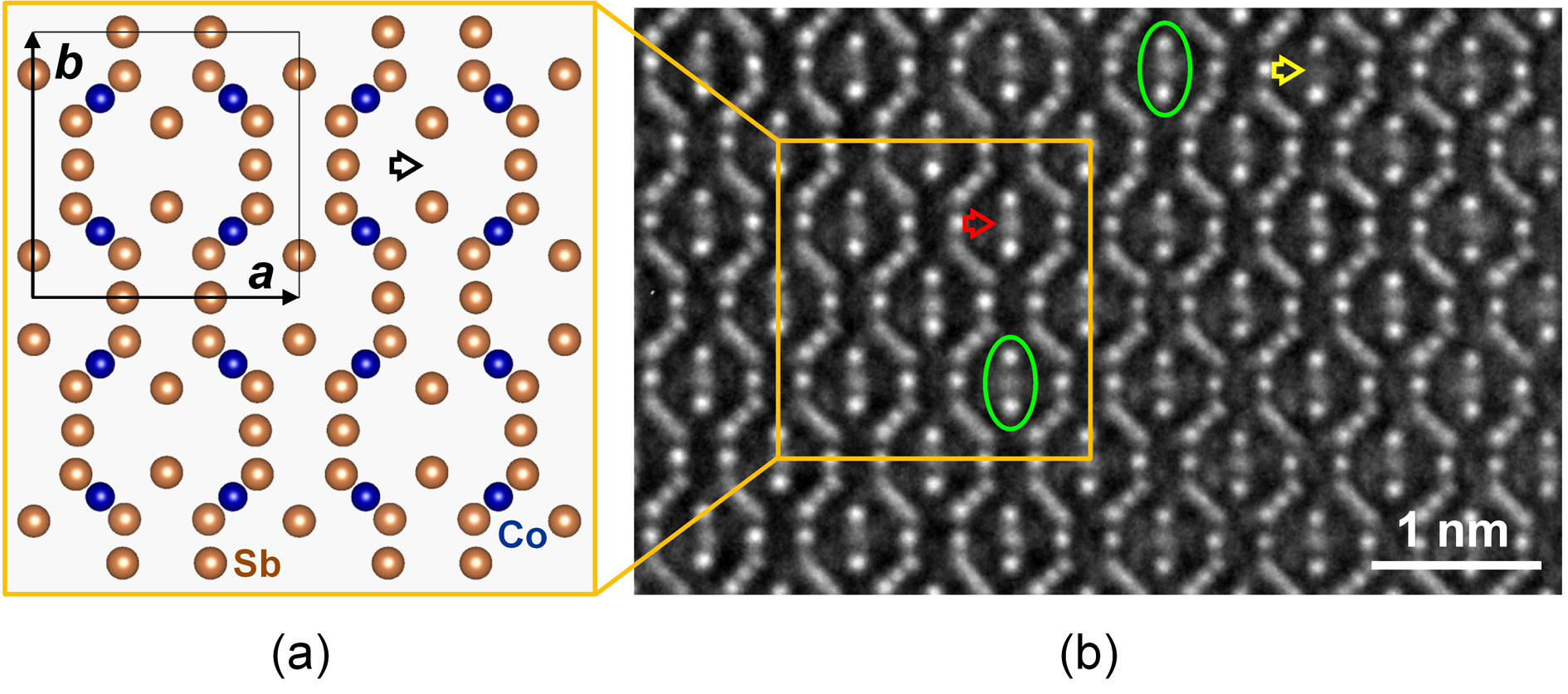Quantification of point defects in high performance n-type and p-type CoSb3 thermoelectric alloys using aberration-corrected transmission electron microscopy
- Abstract number
- 800
- Event
- European Microscopy Congress 2020
- DOI
- 10.22443/rms.emc2020.800
- Corresponding Email
- [email protected]
- Session
- PSA.4 - Batteries & Materials for Energy Conversion
- Authors
- Dr Lei Jin (1), Fengshan Zheng (1), Dr Di Wu (3), Dr Zhenhua Ge (2)
- Affiliations
-
1. Ernst Ruska-Centre for Microscopy and Spectroscopy with Electrons and Peter Grünberg Institute, Forschungszentrum Jülich GmbH
2. Faculty of Materials Science and Engineering, Kunming University of Science and Technology
3. Key Laboratory for Macromolecular Science of Shaanxi Province, Shaanxi Key Laboratory for Advanced Energy Devices, School of Materials Science and Engineering, Shaanxi Normal University
- Keywords
CoSb3 skutterudites, negative CS imaging, thermoelectric materials
- Abstract text
Thermoelectric materials can directly interconvert heat to electricity and offer a solution for nowadays’ energy crisis. The thermoelectric performance of a material is evaluated by a dimensionless figure of merit, ZT = σS2/κ, where σ, S, and κ are electrical conductivity, Seebeck efficiency and thermal conductivity, respectively. CoSb3 has a face-cubic-centered structure and is one of the most promising thermoelectric materials due to the fact that it has a relatively high power factor (σS2) and a comparatively low thermal conductivity [2]. Further improvement in thermoelectric performance of both n-type and p-type CoSb3 alloys can be realized by point defects engineering [3]. One effective strategy is to dope the Co sites with elements, e.g., Ni, in order to tune carrier species and concentrations. Another solution is filling atoms, such as Yb [4] and Ce [5], in the interstitial sites of the cage-like CoSb3 lattice (see black arrow in Figure 1a) to enhance phonon scattering.
Though considerable efforts have been made to detect the filled interstitial atoms using scanning transmission electron microscopy, clear evidence of positions and stoichiometric of these point defects are lacking so far, in particular at the atomic scale. A major difficulty is that the atoms like Yb [4] are usually partially-filled and could not provide sufficient contrast for further quantifications. In order to understand the relationship between the thermoelectric performance and the introduced point defects, techniques that can quantify atoms of different species in the atomic scale are of high value to this community. Here, we present a high-resolution transmission electron microscopy study of both n-type and p-type filled CoSb3 thermoelectric alloys using the negative CS imaging (NCSI) technique [5].
Figure 1. (a) Projection of a 2×2×2 unit cell of CoSb3 in the c direction. Co: blue and Sb: orange. The interstitial site is marked by a black arrow. (b) An experimental negative CS image recorded along the <001> direction of a Ce filled CoSb3. The orange frame marks a 2×2×2 unit cell of CoSb3. The interstitial Ce atom columns are marked by arrows. Red: high concentration, yellow: low concentration. Local distortions are evident, as marked by green ellipses.
Figure 1b shows an experimental NCSI image recorded along the <001> direction of Ce filled CoSb3. All atomic columns, including the filled Ce (red arrow), are imaged with bright contrast on a dark background. Aside from the high concentration Ce columns, a column with relatively low concentration is also evidenced (yellow arrow). Local distortions mediated by Ce and surrounding Sb atom columns are detected, as marked for example by green ellipses. The distribution of Ce atoms and associated lattice distortions are expected to be responsible for the thermoelectric performance (not shown).
- References
[1] G. Snyder et al, Nature Mater. 7 (2008) 105-114.
[2] T. Caillat et al, J. Appl. Phys. 80 (1996) 4442-4449.
[3] M. Rull-Bravo et al, RSC Adv. 5 (2015) 41653-41667.
[4] Z. Liu et al, J. Mater. Chem. C 7 (2019) 13622-13631.
[5] Y. Tang et al, Nature Commun. 6 (2015) 7584.
[5] C.L. Jia, M. Lentzen and K. Urban, Science 299 (2003) 870-873.

